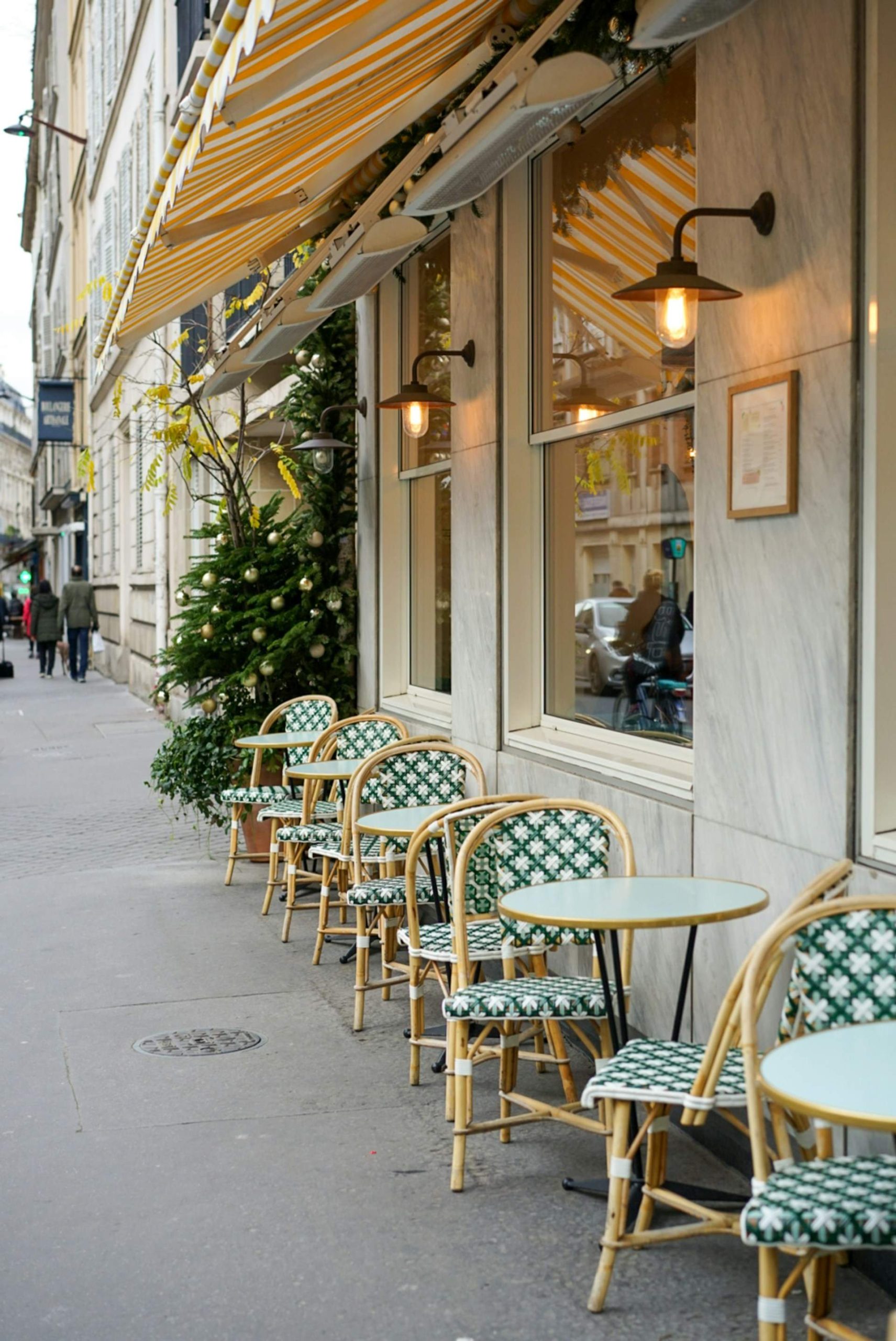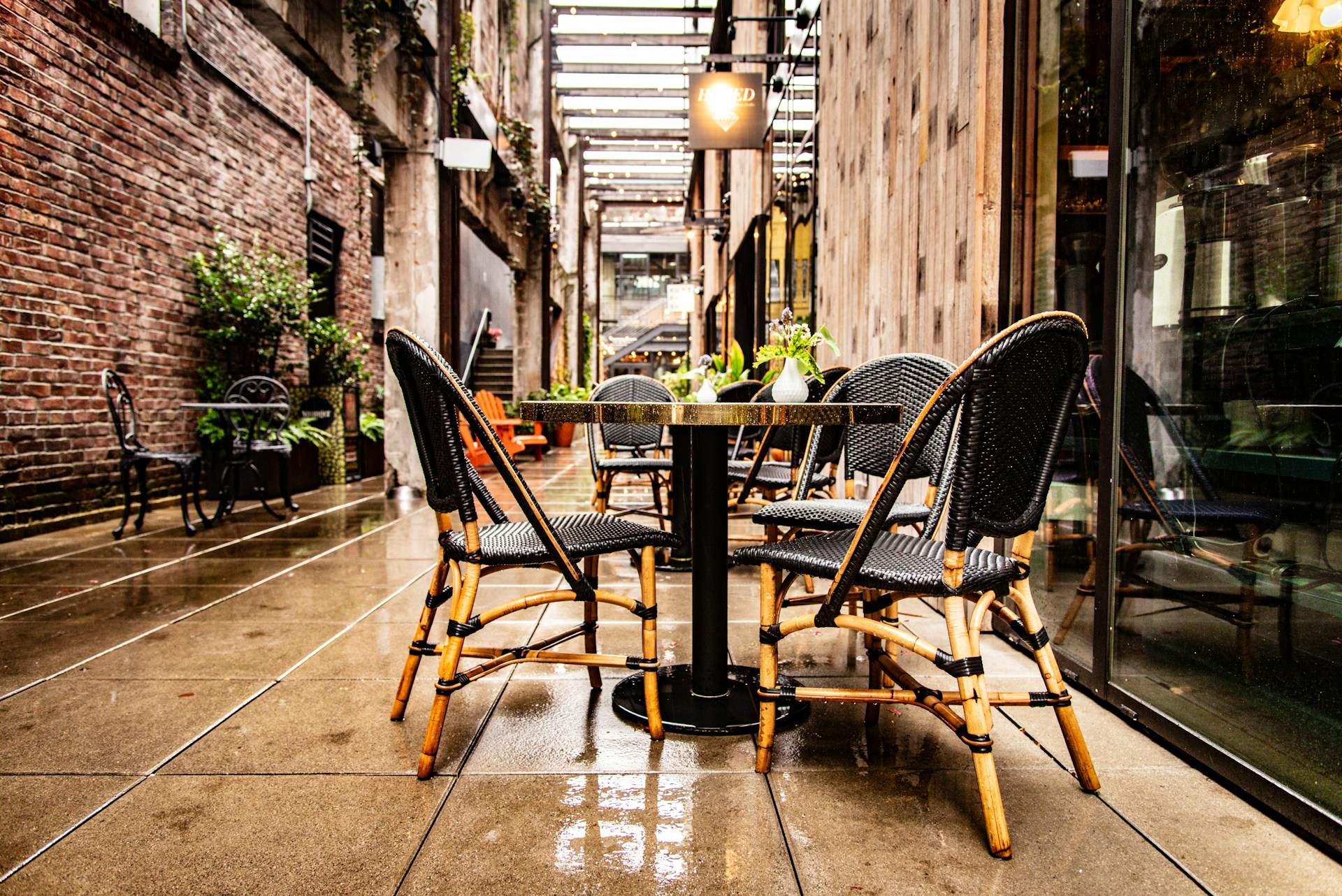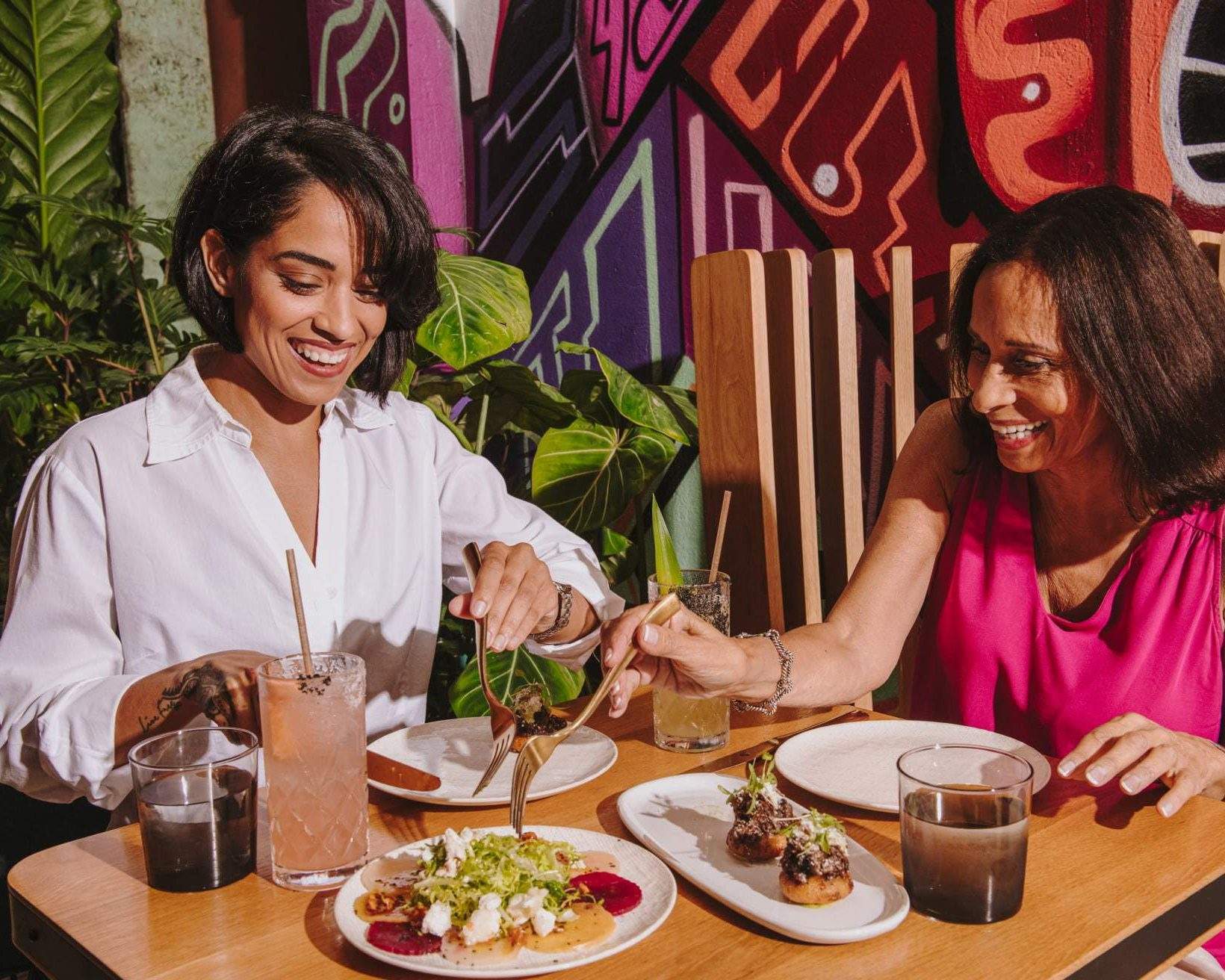In the era of al fresco dining, a restaurant’s outdoor seating area can be just as important as its indoor space. With the right design and setup, your patio or sidewalk seating has the potential to attract new customers while boosting revenue and creating a unique dining experience that sets you apart from the competition.
But how do you make the most of your outdoor space? It’s not always as simple as throwing out a few tables and chairs. For your outdoor area to shine and be the envy of other restaurants, you need to get creative with your layout, decor, and amenities.
Here’s how.
Legal outdoor requirements
Creating an amazing outdoor dining space is high on restaurant wish lists these days. But before you start dreaming up design plans, make sure you understand the legal landscape for al fresco dining in your area.
Regulations can differ not just between provinces, but even between neighboring municipalities. Rather than risk running into trouble with officials down the road, do your homework upfront. Consult local bylaws and agency websites to understand requirements around licensing, zoning, accessibility, noise levels and more.
The last thing you want is to invest in an elaborate patio buildout only to be forced to make costly modifications or face fines because you didn’t follow proper permitting channels. Or to have to abruptly shut down alcohol service because of zoning limitations you didn’t know about.
Get all your ducks in a row early by working closely with city authorities. That way, you can forge ahead with creative outdoor designs and amenities, confident you’re operating within the lines. With the right legal preparation, you’ll be able to dazzle diners with an outdoor space that delights while steering clear of any bureaucratic headaches.
Why outdoor seating is so important
When the weather cooperates, an inviting outdoor dining area can be a huge asset for restaurants. It’s an opportunity to expand your floor plan without a full renovation, while offering guests a unique experience they crave.
Make no mistake, people are drawn to the charms of al fresco dining. There’s something about enjoying a meal outdoors—surrounded by fresh air, natural light, and the sights and sounds of the open air—that feels like an escape from the everyday. It transports guests and turns an ordinary outing into something more memorable.
That ambiance attracts a valuable customer base, too. Outdoor spaces are perfect for everything from weekend brunches to celebratory dinners to lively social gatherings. With the right setup and thoughtful design touches, your patio or streetside seating becomes a draw in its own right.
But outdoor areas aren’t just about the experience. They’re also a major revenue driver. Extending service outdoors instantly increases your total seating capacity during peak seasons without a full buildout. You can capture more of that foot traffic walking by too.
Done right, optimizing your restaurant’s outdoor space allows you to delight guests, boost revenue, gain a competitive edge, and create more opportunities for memorable experiences that keep diners coming back for more. It’s an opportunity few operators can afford to ignore.

Ideas to optimize your outdoor seating at your restaurant
Create a cohesive atmosphere
Your outdoor seating area should feel like a natural extension of your indoor space, not an afterthought. It’s also an opportunity to extend your floor plan. To create a cohesive atmosphere, carry over design elements from inside the restaurant, such as colour schemes, lighting fixtures, and decor styles.
For example, if your restaurant has a cozy, rustic vibe, bring that same warmth outside with wooden picnic tables, string lights, and potted herbs. If your interior is sleek and modern, opt for minimalist metal furniture and geometric accent pieces.
The goal is to choose outdoor elements that complement your indoor aesthetic, creating an effortless transition between the two spaces. Paying attention to the details will make your outdoor seating feel intentional and inviting, encouraging guests to linger and enjoy the al fresco experience.
Make smart use of space
Outdoor seating areas come in all shapes and sizes, from sprawling patios to narrow sidewalks. No matter how much space you have to work with, you need to use it efficiently to maximize seating capacity and guest comfort.
If you have a large patio, consider creating distinct zones for different types of seating, such as a lounge area with couches and low tables, a bar area with high-top tables and stools, and a traditional dining area with standard tables and chairs. A variety of options will appeal to different types of guests and help you make the most of your square footage.
For smaller spaces, look for ways to optimize every inch. Use slim, space-saving furniture like bistro tables and folding chairs, and consider adding built-in benches or planters that double as seating. Vertical elements like trellises or green walls can also help you maximize space by drawing the eye upward and creating a sense of privacy.
Provide shade and shelter
No matter how beautiful your outdoor seating area is, guests won’t use it if they’re uncomfortable. Make sure that your space is inviting in all types of weather by offering shade and shelter from the elements.
If your budget allows, consider installing a permanent structure like a pergola or awning over your outdoor seating area. These features not only provide shade on hot, sunny days but also offer some protection from rain and wind, allowing you to extend your outdoor dining season.
For a more flexible and affordable option, look into umbrellas, shade sails, or retractable canopies. These elements can be adjusted or removed depending on the weather, giving you more control over your outdoor environment.
It’s also worth thinking about providing other amenities to keep guests comfortable, such as outdoor heaters for chilly evenings, fans or misters for hot days, and blankets or lap throws for added coziness. By creating a sheltered, comfortable space, you’ll encourage guests to stay and enjoy your outdoor seating area no matter the weather.
Incorporate greenery and natural elements
One of the joys of outdoor dining is the opportunity to connect with nature. Make guests feel connected to the great outdoors with plenty of greenery and natural elements in your seating design.
Potted plants, hanging baskets, and window boxes can add a pop of colour and freshness to your space while also creating a sense of privacy and seclusion. If you have room, consider planting a small herb or vegetable garden that your kitchen can use in dishes to give guests a true farm-to-table experience.
Look for other ways to bring natural elements into your outdoor seating area. Use materials like wood, stone, or woven textiles to create a warm, organic feel, and consider incorporating water features like fountains or reflecting pools for a soothing ambiance.
Surrounding your guests with greenery and natural elements creates an outdoor oasis that feels worlds away from the hustle and bustle of daily life—a true escape that will keep them coming back for more.
Get creative with lighting
Lighting can make or break the ambiance of your outdoor seating area, especially in the evening hours. While standard overhead lighting can get the job done, why not take this opportunity to get creative and make your space truly shine?
String lights are a popular choice for outdoor dining areas and for a good reason. They create a warm, inviting glow that instantly makes any space feel more intimate and romantic. Drape them overhead, wrap them around trees or poles, or use them to highlight specific features like a bar or lounge area.
Lanterns are another great option for adding a soft, playful touch to your outdoor lighting scheme. Hang them from branches or hooks, place them on tables as centrepieces, or group them together to create a cozy, flickering ambiance.
For a more dramatic effect, consider using uplighting to highlight trees, walls, or other architectural features. This technique can add depth and dimension to your space, making it feel larger and more intriguing.
And don’t forget about the practical side of lighting. Make sure your outdoor seating area is well-lit for safety and comfort, with clear paths and no dark corners. You can always use dimmer switches or multiple lighting circuits to adjust the brightness throughout the evening.
Offer unique amenities
To really set your outdoor seating area apart, think about offering unique amenities that guests won’t find at other restaurants. These special touches can help create a memorable experience that keeps diners coming back for more.
One idea is to create a dedicated outdoor bar or serving station. This can be as simple as setting up a few tall tables and a rolling bar cart or as elaborate as building a full-service bar with a sink, fridge, and draught lines. Offering a selection of refreshing drinks and small bites specifically designed for outdoor sipping and snacking.
If your space allows, consider adding some recreational elements like lawn games or a small stage for live music. These features encourage guests to linger and socialize, turning your outdoor seating area into a destination in its own right.
For a touch of luxury, think about providing blankets, sunglasses, or even small fans to keep guests comfortable in any weather. You could also offer a selection of board games or books for guests to enjoy while they wait for their meals.
Remember, the key is to get creative and think outside the box. By offering unique amenities that enhance the outdoor dining experience, you’ll create a space that truly stands out from the competition.
Digital reservation systems
As your restaurant expands its outdoor footprint, having the right reservations system is central to coordinating indoor and outdoor seating. Leading cloud-based platforms allow hosts to update floor plans in real-time based on outdoor configurations, both on site and on the go. They can optimize distribution of guests across all available tables for a smooth service flow.
Many systems also offer mobile diner migration capabilities. This lets servers easily shift parties between indoor and outdoor areas mid-meal if needed, without disrupting their experience. Plus, contactless menus and payment enhance the al fresco ambiance.
With real-time seating management powered by digital reservations, you can deliver exceptional service no matter where guests dine. It’s a versatile solution that allows you to maximize revenue while creating memorable experiences that keep patrons coming back for more.
Summary: Optimizing your outdoor seating
Making the most out of outdoor seating can add a whole lot more to your restaurant. With these tips, you can get creative and focus on what really matters and create an outdoor space guests can’t wait to visit, no matter the weather.
Frequently Asked Questions
The outdoor sitting area at a restaurant is commonly referred to as:
- Patio
- Terrace
- Sidewalk seating
- Al fresco dining area
Incorporate elements like trellises, planters, decorative screens or curtain panels to create semi private nooks and divide up the space.
Use different floor surfaces, pergolas, planter boxes or outdoor rugs to visually section off areas for lounging, dining, bars etc. Varied furniture groupings also help delineate spaces.



